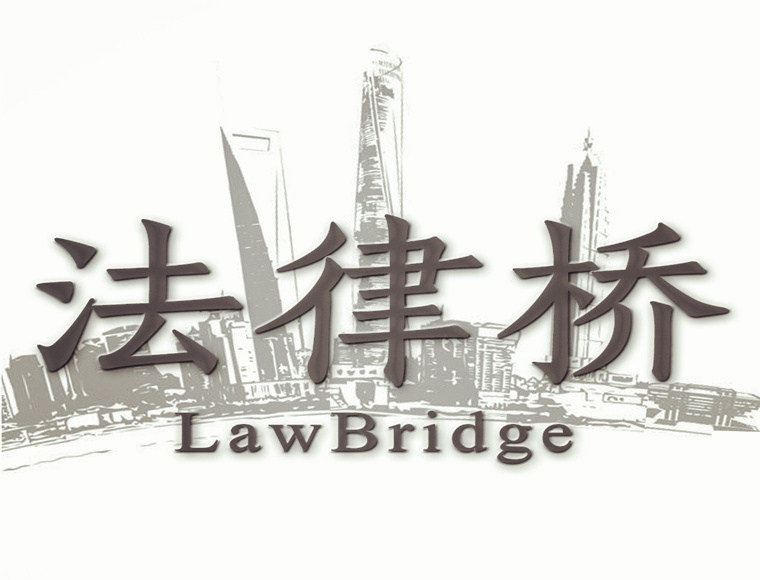7 ways to adjust the equity structure of enterprises controlled by the same controller
Source: Internet, "Equity Investment Forum, Positive Policies and Legal Views"
Before going public, companies planning to go public may need to adjust the shareholding structure of companies within the group to meet the listing requirements in order to solve problems such as unprominent main business, horizontal competition, and related party transactions.
Non-listed companies may also adjust the equity structure of the group company due to corporate strategic planning and financing needs.
Equity structure adjustments often involve high tax burdens and operating costs. Whether adjustments are necessary and which adjustment method is the best requires detailed demonstrations and prudent implementation.
This article mainly briefly reviews common shareholding structure adjustment methods of non-listed companies from the aspects of law and taxation for reference.
01
Factors to be considered in equity structure adjustment
In addition to the consideration of the commercial purpose itself, the adjustment of the shareholding structure of enterprises controlled by the same controller often needs to consider the following factors:
1. Control
The adjustment of the equity structure shall not affect the control of the enterprise by the actual controller of the enterprise.
2. Financing and listing
Whether the adjusted structure is conducive to various forms of financing for enterprises, including the introduction of strategic investment, bank loans, issuance of stocks and bonds, etc.
If the company plans to go public, the adjustment of the equity structure needs to meet the requirements of the listing.
3. Tax burden
In the process of equity structure adjustment, there will inevitably be tax obligations, and the tax burdens that need to be borne by different methods may be different.
4. Easy to operate
Different equity adjustment methods require different processes, procedures, materials, etc., and the time required is also different.
5. Others
Such as the degree of cooperation of other shareholders.
(1) Applicable scenarios
Equity transfer is the most common method with the widest scope of application and the easiest operation.
(2) Operation points
1. Determine the equity transfer price.
For equity transfer between enterprises controlled by the same controller, the price can be negotiated and evaluated. However, if the equity transfer price is obviously low, the tax authority can verify the equity transfer income, generally based on the net assets per share or the net asset share corresponding to the equity. See "(3) Tax Issues" below for details.
So, is it necessary to carry out asset appraisal to determine the equity transfer price?
According to Article 14 of the Measures for the Administration of Individual Income Tax on Equity Transfer Income (Trial), asset appraisal is required under the following circumstances:
If the land use rights, houses, unsold real estate, intellectual property rights, prospecting rights, mining rights, equity and other assets of the invested enterprise account for more than 20% of the total assets of the enterprise, the competent tax authority may refer to the statutory qualification provided by the taxpayer. The asset appraisal report issued by the intermediary agency approved the equity transfer income.
2. Fulfill internal procedures.
To transfer the equity of a limited liability company to the outside world, it is first necessary to notify other shareholders in writing, obtain the consent of more than half of the other shareholders, and waive the right of first refusal, unless otherwise stipulated in the company's articles of association (Article 71 of the "Company Law").
If a natural person shareholder transfers equity, it is recommended to obtain the consent of the spouse.
3. Sign the equity transfer agreement.
4. Tax declaration.
5. Handle industrial and commercial change registration.
After the equity transfer is completed, it is necessary to amend the company's articles of association, change the company's shareholder register, and go through industrial and commercial change registration.
(3) Tax issues
The equity transfer of non-listed companies mainly involves stamp duty and income tax, as follows:
If the equity transfer price is unreasonable, according to the "Individual Income Tax Administration Measures for Equity Transfer Income (Trial)", the tax authorities can verify the equity transfer income, as follows:
Circumstances for determining income from equity transfer:
1. The reported equity transfer income is obviously low without justifiable reasons;
2. Failing to complete the tax declaration within the prescribed time limit, and was ordered by the tax authority to declare within a time limit, and still fails to declare within the time limit;
3. The transferor fails to provide or refuses to provide relevant information on equity transfer income;
4. Other circumstances under which income from equity transfers should be assessed.
Circumstances where the income from equity transfer is obviously low:
1. The reported equity transfer income is lower than the corresponding net asset share of the equity.
Among them, if the invested enterprise owns assets such as land use rights, houses, unsold real estate by real estate enterprises, intellectual property rights, prospecting rights, mining rights, equity and other assets, the reported equity transfer income is lower than the share of the fair value of the net assets corresponding to the equity;
2. The reported equity transfer income is lower than the initial investment cost or the price paid for the equity and related taxes and fees;
3. The reported equity transfer income is lower than the equity transfer income of the same shareholder or other shareholders of the same enterprise under the same or similar conditions;
4. The reported equity transfer income is lower than the equity transfer income of enterprises in the same industry under the same or similar conditions;
5. Unreasonable and gratuitous transfer of equity or shares;
6. Other circumstances as determined by the competent tax authority.
Reasons for the obvious low income from equity transfer:
1. Able to issue valid documents proving that due to national policy adjustments, the production and operation of the invested enterprise has been significantly affected, resulting in the transfer of equity at a low price;
2. Inherit or transfer the equity to the spouse, parents, children, grandparents, maternal grandparents, grandchildren, siblings, and caregivers who are directly responsible for the transferor's support or support obligations to the transferor or a supporter;
3. The internal transfer of non-transferable equity held by employees of the enterprise, which is stipulated by relevant laws, government documents or the company's articles of association, and has relevant materials to fully prove that the transfer price is reasonable and true;
4. Other reasonable circumstances where both parties to the equity transfer can provide effective evidence to prove its rationality.
Method for checking equity transfer income:
1. Net asset verification method
the
Equity transfer income is determined according to the net assets per share or the net asset share corresponding to the equity.
If the land use rights, houses, unsold real estate, intellectual property rights, prospecting rights, mining rights, equity and other assets of the invested enterprise account for more than 20% of the total assets of the enterprise, the competent tax authority may refer to the statutory qualification provided by the taxpayer. The asset appraisal report issued by the intermediary agency approved the equity transfer income.
If the equity transfer occurs again within 6 months and the net assets of the invested enterprise have not changed significantly, the competent tax authority may refer to the asset evaluation report of the invested enterprise at the time of the last equity transfer to verify the income of this equity transfer.
2. Analogy
With reference to the same or similar conditions, the same shareholder or other shareholders' equity transfer income of the same company shall be assessed;
Refer to the income from equity transfers of enterprises in the same industry under the same or similar conditions.
3. Other reasonable methods
If it is difficult for the competent tax authority to use the above methods to verify the income from equity transfers, it may adopt other reasonable methods for verification.
Therefore, if the price agreed by both parties to the equity transfer is unreasonable, the tax authorities can verify the income from the equity transfer and levy taxes based on the verified income.
Special tax treatment for equity acquisition:
If it is an equity acquisition between resident enterprises under the same controller, special tax treatment can be applied if relevant conditions are met.
("Notice of the Ministry of Finance and the State Administration of Taxation on Several Issues Concerning the Handling of Enterprise Income Tax for Enterprise Restructuring Business" Caishui [2009] No. 59, "Notice of the Ministry of Finance and the State Administration of Taxation on Issues Concerning the Treatment of Enterprise Income Tax in Promoting Enterprise Reorganization" Caishui [2014] No. 109)
First, equity acquisition has its definition:
Refers to a transaction in which a company purchases the equity of another company in order to achieve control over the acquired company.
Secondly, the following conditions must be met before special tax treatment can be carried out:
1. It has a reasonable business purpose, and the main purpose is not to reduce, exempt or postpone the payment of taxes.
2. The proportion of assets or equity of the acquired, merged or divided part complies with the proportion stipulated in this notice. (Note: For equity acquisition, the equity purchased by the acquiring company shall not be less than 50% of the total equity of the acquired company, and the equity payment amount of the acquiring company at the time of the equity acquisition shall not be less than 85% of its total transaction payment)
3. The original substantive business activities of the reorganized assets shall not be changed within 12 consecutive months after the enterprise reorganization.
4. The amount of equity payment involved in the restructuring transaction consideration complies with the ratio specified in this notice. (Note: same note as above)
5. The original major shareholder who has obtained equity payment during the enterprise restructuring shall not transfer the acquired equity within 12 consecutive months after the restructuring.
The so-called special tax treatment refers to:
1. The tax basis for the shareholders of the acquired company to obtain the equity of the acquired company shall be determined based on the original tax basis of the acquired equity.
2. The tax basis for the acquiring company to obtain the equity of the acquired enterprise shall be determined based on the original tax basis of the acquired equity.
3. The tax basis and other relevant income tax matters of the original assets and liabilities of the acquiring company and the acquired company remain unchanged.
Taxation method for equity transfer:
1. The surplus reserve fund can be converted into share capital and dividends can be transferred first, and then the equity transfer can be carried out. In this way, the taxable income can be deducted from the amount of capitalization and dividends.
However, it should be noted that when the statutory common reserve fund is converted into capital, the retained reserve fund shall not be less than 25% of the company's registered capital before the conversion.
2. If a resident enterprise that conducts equity transfer loses money, it can first make up for the loss and then pay corporate income tax.
(4) Tax issues on the restoration of entrusted equity holdings
If the company to be listed and its subsidiaries have equity holdings on behalf of others, according to the listing requirements, the equity must be restored.
The restoration of entrusted equity is still an equity transfer. It is generally believed that when the nominal shareholder transfers the equity to the actual shareholder, even if the transfer is at a par, it still needs to pay personal income tax.
When transferring at a fair price, the tax department will think that the transfer price is unreasonable, so it will be assessed and collected based on the net asset price, but you can also try to communicate with the local tax authority, and there is room for tax savings in the proxy holding between close relatives.
In practice, there is also a court judgment to restore the nominee shareholding without taxation.
(1) Applicable scenarios
When the same controller controls the equity adjustment between enterprises, it may often involve two forms of equity transfer or equity contribution. for example:
1. The actual controller controls two companies, A and B, and wants to change company B into a subsidiary of company A. At this time, there are two ways. One is that the actual controller transfers its equity in company B to company A , Second, the actual controller contributes capital to Company A with the equity of Company B, so that Company B becomes a subsidiary of Company A.
2. The actual controller controls three companies, A, B, and C respectively, and intends to turn companies B and C into holding subsidiaries of company A, and the original shareholders of companies B and C become shareholders of company A, then the original shareholders of companies B and C Shareholders can invest in company A with the equity of companies B and C, which is a share-swap merger.
In this case, equity contribution has two advantages over equity transfer. The first advantage is that the transferee does not need to pay the equity transfer price, which can reduce the financial burden.
The second advantage is that the tax treatment is more beneficial to the investor if the investment is made by equity.
First of all, natural person shareholders who contribute capital with equity can file a record with the tax authority and pay individual income tax in installments within 5 years ("Notice on Individual Income Tax Policies for Personal Non-monetary Asset Investment" Caishui [2015] No. 41);
Secondly, if the legal person shareholders make capital contributions with equity, they can be evenly included in the taxable income of the corresponding year within a period of no more than 5 years ("Announcement on Issues Concerning the Collection and Management of Enterprise Income Tax for Non-monetary Asset Investments", Announcement of the State Administration of Taxation 2015 No. 33 of the Year).
(2) Applicable conditions
The equity contribution needs to meet the following conditions (Article 11 of the Judicial Interpretation (III) of the Company Law):
One is that the equity used for capital contribution must be legally held and transferable in accordance with the law.
This requires that there is no agreement prohibiting transfer between the company's articles of association or the original shareholders, and the acquisition of the equity used for capital contribution is legal.
The second is that the equity used for capital contribution has no rights defects or encumbrances. For example, equity contribution cannot be pledged.
In addition, if the contribution is made with subscribed equity, the subscription period must not have expired and the rights of shareholders are not restricted (the company's articles of association or shareholders' agreement do not restrict the rights of subscribed shareholders).
Third, the legal procedures for equity transfer have been fulfilled.
The capital contribution equity must have been transferred to the invested company, and the industrial and commercial change registration has been completed.
Fourth, the equity used for capital contribution must undergo a value evaluation. The capital contribution equity needs to be evaluated by a qualified evaluation agency in accordance with the law.
(3) Operation points
In addition to the equity contribution that must be evaluated, the equity contribution of a limited liability company also requires the approval of more than half of the other shareholders and the commitment of other shareholders to waive the preemptive subscription.
Capital verification is required for equity contributions to companies to be listed.
After completing the capital contribution, issue a capital contribution certificate, change the register of shareholders (if necessary), revise the articles of association, and complete the industrial and commercial change registration.
(4) Special tax treatment in share swap merger
Share swap merger means that one or more enterprises (merged enterprise) transfer all their assets and liabilities to another existing or newly established enterprise (merged enterprise), and the shareholders of the merged enterprise exchange the equity or non-equity payment of the merged enterprise, realizing Legal merger of two or more enterprises.
According to the "Notice of the Ministry of Finance and the State Administration of Taxation on Several Issues Concerning the Handling of Enterprise Income Tax on Enterprise Restructuring Business" (Cai Shui [2009] No. 59), special tax treatment can be applied, as follows:
For business mergers, the amount of equity payment obtained by corporate shareholders at the time of the business merger is not less than 85% of the total transaction payment, and business mergers under the same control that do not require payment of consideration may choose to be handled in accordance with the following provisions:
1. The merging enterprise accepts the tax basis of the assets and liabilities of the merged enterprise, which shall be determined based on the original tax basis of the merged enterprise.
2. The relevant income tax matters before the merger of the merged enterprise shall be inherited by the merged enterprise.
3. The limit of the loss of the merged enterprise that can be made up by the merged enterprise = the fair value of the net assets of the merged enterprise × the interest rate of the longest-term treasury bond issued by the state at the end of the year when the merged business occurs.
4. The tax basis for the shareholders of the merged enterprise to obtain the equity of the merged enterprise shall be determined based on the tax basis of the equity of the merged enterprise originally held by them.
(1) Applicable scenarios
Equity transfers can also be carried out between wholly-owned subsidiaries controlled by the same controller or between wholly-owned subsidiaries and the parent company.
Equity transfer is not a legal concept. It is essentially an equity transfer. In terms of operation, it is still necessary to sign an equity transfer agreement, amend the articles of association, and go through industrial and commercial registration for changes. However, in terms of taxation, equity transfers that meet certain conditions can be subject to special tax treatment. .
Since it is a wholly-owned subsidiary, no other shareholder consent is involved.
For example, if company A wholly owns two companies, B and C, and intends to change company C into a wholly-owned subsidiary of company B, it can carry out a free equity transfer and apply special tax treatment.
It should be noted that it is only applicable between wholly-owned subsidiaries controlled by resident enterprises and the parent company, because there is only one one-person limited company as a natural person shareholder.
(2) Special tax treatment
Article 3 of the "Notice of the Ministry of Finance and the State Administration of Taxation on Promoting Enterprise Restructuring Related to Enterprise Income Tax Treatment" (Cai Shui [2014] No. 109): Between 100% directly controlled resident enterprises, as well as those subject to the same or the same multiple residents Transfer of equity or assets between resident enterprises 100% directly controlled by the enterprise according to the net book value, if there is a reasonable commercial purpose, and the main purpose is not to reduce, exempt or postpone the payment of taxes, within 12 consecutive months after the transfer of equity or assets If the original substantive business activities of the transferred equity or assets are not changed, and neither the transfer-out enterprise nor the transfer-in enterprise has recognized profit or loss in accounting, special tax treatment may be applied.
The special tax treatment is as follows:
Neither the transfer-out enterprise nor the transfer-in enterprise recognizes income.
2. The tax basis for the transferee enterprise to obtain the transferred equity or assets shall be determined by the original net book value of the transferred equity or assets.
3. The transferred assets obtained by the transferee enterprise shall be depreciated according to their original net book value.
Article 1 of the Announcement of the State Administration of Taxation on the Administration of Enterprise Income Tax Collection on Assets (Equity) Transfer (Announcement No. 40, 2015 of the State Administration of Taxation):
(1) Between the 100% directly controlled parent company and the subsidiary company, the parent company transfers the equity or assets it holds to the subsidiary company based on the net book value, and the parent company receives 100% equity payment from the subsidiary company.
The parent company is treated as an increase in long-term equity investment, and the subsidiary is treated as receiving investment (including capital reserves, the same below).
The tax basis for the parent company to obtain the equity of the subsidiary is determined based on the original tax basis for the transfer of equity or assets.
(2) Between the 100% directly controlled parent company and the subsidiary company, the parent company transfers the equity or assets held by it to the subsidiary company according to the net book value, and the parent company does not receive any equity or non-equity payment.
The parent company is treated as offsetting paid-in capital (including capital reserve, the same below), and the subsidiary is treated as receiving investment.
(3) Between the 100% directly controlled parent company and the subsidiary company, the subsidiary company transfers the equity or assets it holds to the parent company based on the net book value, and the subsidiary company does not receive any equity or non-equity payment.
The parent company shall be treated as investment recovery or investment acceptance, and the subsidiary company shall be treated as offsetting paid-in capital.
The parent company shall correspondingly reduce the tax basis of holding the subsidiary's equity according to the original tax basis of the transferred equity or assets.
(4) Between subsidiaries that are 100% directly controlled by the same or multiple parent companies, under the leadership of the parent company, one subsidiary transfers its equity or assets to another subsidiary at the net book value, and the transfer party No equity or non-equity payments were received.
The transferring party shall be treated as offsetting owner's equity, and the transferring party shall be treated as receiving investment.
(1) Applicable scenarios
When a company planning to go public adjusts its shareholding structure, if a shareholder wants to gain control of the company, he can either acquire stock equity, increase capital, or introduce new investors. like:
1. Natural person A directly controls company A to be listed, and now plans to indirectly control A through investment entity B. Two methods can be adopted. One is equity transfer, where natural person A transfers the equity to B;
The second is to increase capital. The investor B increases the capital of A, and obtains a controlling stake through capital increase.
2. Company B holds 30% of the shares of Company A, a joint-stock company. Now it plans to turn Company A into a holding subsidiary. Two methods can also be adopted, one is equity transfer, and other shareholders of Company A will transfer the equity;
The second is to increase capital. Company B will increase the capital of Company A and obtain a controlling stake in Company A.
3. If company A to be listed wants to introduce strategic investor company B, it can also adopt two methods, one is equity transfer, and other shareholders of company A transfer equity;
The second is to increase the capital. Company B will increase the capital of Company A.
In the first case, if the method of equity transfer is adopted, natural person A needs to pay personal income tax, and at the same time needs to invest funds in B as the price of B’s transfer of equity;
If the method of capital increase is adopted, it does not involve tax payment, but it needs to occupy a larger amount of funds. Of course, if you do not plan to go public in the short term, you can also subscribe for capital increase and pay in steps.
In the second case, under the currency capital increase method, Company B does not involve tax payment, but it occupies a larger amount of funds than the equity transfer method. Yang Chunbao's lawyer team continues to select high-quality legal practice articles for you.
In the third case, the method of capital increase is generally adopted, because the capital increase funds enter the entity to be listed, while under the equity transfer method, the equity transfer price is obtained by the shareholders, not the entity to be listed, which deviates from the original intention of the company to introduce strategic investors .
Since this article focuses on the adjustment of the equity structure of enterprises under the control of the same controller, the third situation of introducing new investors will not be discussed for the time being.
(2) Operation points
1. Determine the capital increase price.
Generally, the appraised net asset price or valuation per share shall prevail (premium is allowed). If non-monetary assets are used to increase capital, non-monetary assets need to be appraised and priced.
2. Fulfill internal procedures.
The company’s resolution on capital increase and share expansion requires the consent of shareholders holding more than two-thirds of the voting rights. If other shareholders do not increase their capital simultaneously, they need to obtain a commitment from other shareholders to waive the right to increase capital in the same proportion.
3. Sign the capital increase and share expansion agreement.
The capital increase shareholder signs an agreement with the company and the original shareholder.
4. Capital verification.
Capital verification is required to increase the capital of a company to be listed.
5. Industrial and commercial change registration.
After completing the capital increase, issue a capital contribution certificate, change the register of shareholders (if necessary), revise the articles of association, and complete the industrial and commercial change registration.
(3) Tax treatment
There is no need to pay taxes for monetary capital increase. For capital increase with non-monetary assets, the preferential tax policy refers to equity investment. There are mainly preferential policies for paying individual/corporate income tax in installments or evenly within five years.
The capital increase with non-monetary assets also involves the value-added tax and land value-added tax of the capital increase party, the deed tax of the invested enterprise, and the stamp duty of both parties.
Depending on the actual situation, there may also be corresponding preferential tax policies.
Such as land appreciation tax:
Units and individuals who invest in real estate as shares during restructuring and reorganization will not be subject to land value-added tax for the time being when they transfer or change their real estate to the invested enterprise—"Announcement on Continuing to Implement Land Value-Added Tax Policies for Enterprise Restructuring and Reorganization" ( Announcement No. 21 [2021] of the Ministry of Finance and the State Administration of Taxation).
If the relevant conditions for corporate restructuring are met, special tax treatment rules may also apply.
(1) Applicable scenarios
In the process of adjusting the equity structure of enterprises controlled by the same controller, capital reduction may also be involved.
The method of capital reduction is mainly applicable to the withdrawal of shareholders:
1. If other shareholders of the company involved in the equity adjustment disagree with the equity adjustment and want to withdraw, but cannot legally withdraw through equity transfer, they can reduce the capital.
2. Between the parent company and the wholly-owned subsidiary, capital reduction is carried out through equity transfer. For example, Company A wholly-owned Company B, and Company B wholly-owned Company C. It is planned to change Company C from A’s grandson company to A’s For a subsidiary company, Company B can transfer 100% equity of Company C to Company A, and at the same time reduce the capital of Company B.
3. In practice, new shareholders are also introduced in the form of first reducing capital and then increasing capital. This method is suspected of tax avoidance and may become the focus of inquiries in the listing review due to its lack of rationality.
(2) Operation points
The capital reduction operation procedure is relatively complicated and takes a long time.
1. Make the resolution of the shareholders meeting.
The approval of shareholders holding more than two-thirds of the voting rights is required.
2. Prepare balance sheet and property list, notify and announce creditors.
The company must prepare a balance sheet and property list, notify creditors within 10 days of making a resolution to reduce registered capital, and make an announcement in a newspaper within 30 days.
Creditors have the right to request the company to pay off its debts or provide corresponding guarantees within 30 days from the date of receipt of the notice, or within 45 days from the date of announcement if the creditor has not received the notice.
3. Change registration.
Change the register of shareholders, amend the articles of association, and handle industrial and commercial change registration.
(3) Tax treatment
1. Legal person shareholders.
Subject to corporate income tax.
After deducting the initial investment cost from the returned assets, the part of retained earnings that should be attributable is recognized as dividend income, and the remaining part is recognized as equity transfer income.
- The State Administration of Taxation's "Announcement on Several Issues Concerning Enterprise Income Tax" (Announcement No. 34 of 2011 of the State Administration of Taxation), in which retained earnings include surplus provident funds and undistributed profits, which are recognized as dividend income and do not need to pay enterprise income tax. Compared with equity transfers, It is more friendly in tax treatment.
2. Natural person shareholders.
Subject to personal income tax.
Taxable income = the total amount of equity transfer income obtained by individuals, liquidated damages, compensation, damages and other funds recovered in other names - the original actual capital contribution (investment amount) and related taxes and fees.
- The State Administration of Taxation's "Announcement on the Collection of Individual Income Tax on Individuals' Termination of Investment and Operation Recovery" (State Administration of Taxation Announcement No. 41, 2011).
(1) Applicable scenarios
In the process of planning to go public, enterprises controlled by the same controller may also conduct company mergers in order to solve problems of horizontal competition or related transactions.
Merger is divided into merger by absorption and merger by new establishment, merger by absorption, and dissolution of the merged enterprise;
A new merger is established, and the parties to the merger are dissolved.
It should be noted that the merger mentioned in this article is the merger in the sense of the "Company Law", and does not include the company merger that does not dissolve the company in the corporate reorganization. like:
1. The same controller holds both companies A and B, and A intends to absorb and merge Company B and dissolve Company B.
2. The same controller holds both companies A and B at the same time. Due to the flaws in the history of the two companies that cannot be rectified, it is proposed to merge companies A and B to establish a new company C, and to dissolve companies A and B.
(2) Operation points
The company merger procedure is relatively complicated, time-consuming and lengthy.
1. Draw up a merger plan. Do a good job of financial investigation first in order to draw up a merger plan.
2. To make resolutions of the shareholders meeting. The approval of shareholders holding more than two-thirds of the voting rights is required.
3. Notification Announcement. The creditors shall be notified within 10 days of the merger resolution being made, and a newspaper announcement shall be made within 30 days.
Creditors may require the company to pay off its debts or provide corresponding guarantees within 30 days from the date of receipt of the notice, or within 45 days from the date of announcement if the creditor has not received the notice.
4. The parties to the merger sign the merger agreement, and prepare the balance sheet and property list.
5. Re-sign the business contract.
6. Changes in personnel relations.
7. Determine the merger base date, conduct assets and capital verification, and issue an asset and capital verification report.
8. Handle asset transfer and transfer procedures.
9. Handle tax changes and tax filing.
10. Go through the industrial and commercial change procedures.
(3) Tax treatment
In company division, value-added tax, land value-added tax, deed tax and stamp duty are generally involved.
VAT exemption:
In the process of asset reorganization, all or part of the physical assets and their associated claims, liabilities, and labor are transferred to other units and individuals through mergers, divisions, sales, replacements, etc. Value-added tax is not levied on transfers - "Notice of the Ministry of Finance and the State Administration of Taxation on Comprehensively Launching the Pilot Project of Replacing Business Tax with Value-Added Tax" (Cai Shui [2016] No. 36)
Deed tax exemption: two or more companies are merged into one company in accordance with legal provisions and contractual agreements, and the original investor remains, the merged company will be exempted from deed tax when it assumes the ownership of the land and houses of the original merged parties - "Announcement on Continuing to Implement Deed Tax Policies on the Restructuring and Reorganization of Enterprises and Institutions" (Announcement No. 17 [2021] of the Ministry of Finance and the State Administration of Taxation).
Land value-added tax exemption:
According to the law or the contract, if two or more enterprises are merged into one enterprise, and the original enterprise's investment subject remains, the land value-added tax will not be levied on the real estate transferred or changed from the original enterprise to the merged enterprise. Announcement on Continuing to Implement Enterprise Restructuring and Restructuring Relevant Land Value-Added Tax Policies (Announcement No. 21 [2021] of the Ministry of Finance and the State Administration of Taxation)
Company mergers may also be subject to special tax treatment rules. For details, see "(4) Special tax treatment in share swap mergers" in "II. Equity Contributions" in this article.
(1) Applicable scenarios
Company division is usually applicable to the divestiture of a certain business (and business qualification) or assets, and can also be used to deal with corporate deadlock, such as:
Company A spins off Company B, and Company B undertakes certain assets or certain business and business qualifications of Company A.
The entity to be listed generally adopts the method of continuous division, because it needs to meet the requirement that the entity to be listed has existed for three years.
Generally speaking, business divestiture can solve the problem that the main business is not outstanding or a certain business is losing money, or a high-quality business can be separately split for listing.
Asset divestiture generally refers to the divestiture of heavy assets such as land and real estate from the company to be listed. Compared with direct transfer, injecting land and real estate into the spin-off company can achieve tax-saving effects.
(2) Operation points
1. Draw up a division plan.
2. To make resolutions of the shareholders meeting. The approval of shareholders holding more than two-thirds of the voting rights is required.
3. Notification Announcement. The creditors shall be notified within 10 days of the day when the division resolution is made, and a newspaper announcement shall be made within 30 days.
4. Sign the separation agreement, prepare the balance sheet and property list.
5. Financial, business, asset and personnel adjustments.
6. Go through the industrial and commercial change procedures.
(3) Tax treatment
In company division, value-added tax, land value-added tax, deed tax and stamp duty are generally involved.
VAT exemption:
In the process of asset reorganization, all or part of the physical assets and their associated claims, liabilities, and labor are transferred to other units and individuals through mergers, divisions, sales, replacements, etc. Value-added tax is not levied on transfers - "Notice of the Ministry of Finance and the State Administration of Taxation on Comprehensively Launching the Pilot Project of Levying Value-Added Tax Instead of Business Tax" (Cai Shui [2016] No. 36).
Deed tax is exempted under the condition that the shareholders remain unchanged: the company is divided into two or more companies with the same investment subject as the original company in accordance with the law and the contract, and the company after the division is exempted from the land and house ownership of the original company Deed Tax - "Announcement on Continuing to Implement Deed Tax Policies on the Restructuring and Reorganization of Enterprises and Institutions" (Announcement No. 17 [2021] of the Ministry of Finance and the State Administration of Taxation).
Non-real estate enterprises are exempted from land value-added tax when the shareholders remain unchanged:
According to the law or the contract, if the enterprise is divided into two or more enterprises with the same investment subject as the original enterprise, the land value-added tax will not be levied for the time being when the original enterprise transfers or changes the real estate to the split enterprise. Announcement on Land Value-Added Tax Policies for Enterprise Restructuring and Restructuring (Announcement No. 21 [2021] of the Ministry of Finance and the State Administration of Taxation).
According to the "Notice of the Ministry of Finance and the State Administration of Taxation on Several Issues Concerning the Handling of Enterprise Income Tax for Enterprise Restructuring Business" (Cai Shui [2009] No. 59), the division of an enterprise can be subject to special tax treatment if it meets the corresponding conditions:
In the case of a company split, all shareholders of the company to be split obtain the equity of the company to be split according to the original shareholding ratio. Not less than 85% of the total transaction payment, you can choose to deal with it according to the following regulations:
1. The tax base of the split enterprise accepting the assets and liabilities of the split enterprise shall be determined by the original tax base of the split enterprise.
2. The income tax matters corresponding to the spun-off assets of the spun-off enterprise shall be inherited by the spun-off enterprise.
3. The amount of losses of the split enterprise that has not exceeded the statutory compensation period can be distributed according to the ratio of the split assets to the total assets, and the split enterprise will continue to make up.
4. If the shareholders of the spin-off company acquire the equity of the spin-off company (hereinafter referred to as "new shares"), if they need to give up part or all of the equity of the spin-off company they originally held (hereinafter referred to as "old shares"), the tax calculation of "new shares" The basis shall be determined by giving up the tax basis of "old shares".
If there is no need to give up the "old shares", the tax basis for acquiring "new shares" can be determined from the following two methods:
Directly determine the tax base of "new shares" as zero;
Or first reduce the tax basis of the "old shares" originally held according to the ratio of the net assets spun out of the spun-off company to the total net assets of the spun-off company, and then distribute the reduced tax basis evenly to the "new shares" .
When enterprises under the control of the same controller adjust the equity structure, several methods may be used at the same time. Different methods are used in different orders, and different tax treatment results will also be produced.
However, it should be noted that the purpose of tax planning is not to avoid tax, but to legally and fully enjoy the country's preferential tax policies.
This article only lists some conventional and important tax treatment rules. In practice, it is still necessary to judge whether other types of taxes and tax treatment rules are involved based on specific circumstances.
Equity issues have always been the focus of listing review, including but not limited to whether the history of equity transfers, capital increases, mergers, divisions, shareholding reforms, etc. Legal compliance, whether the equity is clear, whether the control is stable, whether there are disputes or potential disputes, etc.
Therefore, when a company planning to go public adjusts its shareholding structure, it must take legal compliance as the premise, and comprehensively consider the capital cost, tax cost, time cost, practical difficulty, and potential risks involved in various methods. Objective To choose a suitable shareholding structure.
PE&TMT Lawbridge

主持律师:杨春宝一级律师
电话/微信: 1390 182 6830
业务联系及投稿邮箱:
chambers.yang@dentons.cn
地址:上海市世纪大道100号上海环球金融中心9层/24层/25层






















































First, please LoginComment After ~